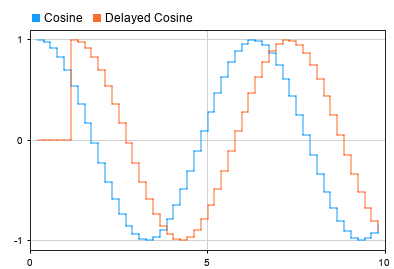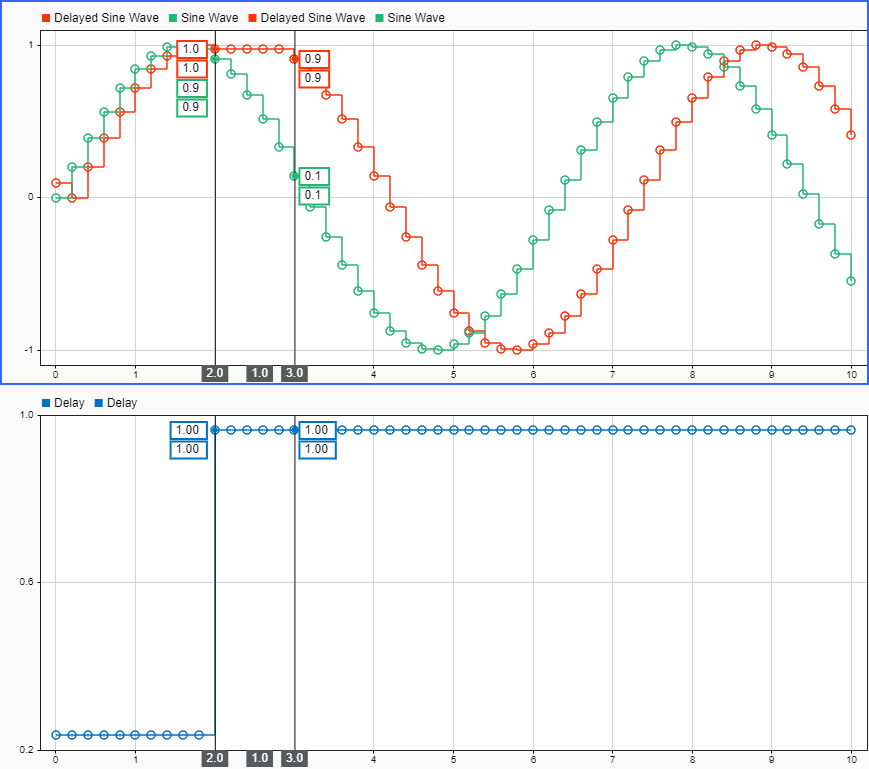Propagation Delay
Libraries:
Simulink /
Discrete
Description
The Propagation Delay block delays the current value for a signal into the future by an amount specified by a delay signal. The Propagation Delay block is well suited for implementing time delay in a discrete system.
On each simulation step k, the block samples the signal input Uk and the delay input Dk. The block output value becomes the signal value after the delay time Dk has elapsed from the current simulation time Tk.
y(t) = Uk when t = Tk + Dk
At the start of the simulation, the block output value is the Initial output block parameter value Y0. The first sample of the delay signal D0 determines when the block output changes from the Initial output value to the delayed input signal values.
y(t) = Y0 when t < T0 + D0
When the simulation reaches the time T0 + D0, the block output is determined by the signal and delay samples.
y(t) = Uk when Tk + Dk ≤ t ≤ Tk+1 + Dk+1,
where:
Uk is the sample of the input signal taken at t = Tk.
Dk is the sample of the delay signal taken at t = Tk.
Tk+1 is the simulation time at which the next signal and delay samples were taken.
Dk+1 is the delay sample taken at time Tk+1.
Examples
Ports
Input
Output
Parameters
Block Characteristics
Data Types |
|
Direct Feedthrough |
|
Multidimensional Signals |
|
Variable-Size Signals |
|
Zero-Crossing Detection |
|
Extended Capabilities
Version History
Introduced in R2022b

